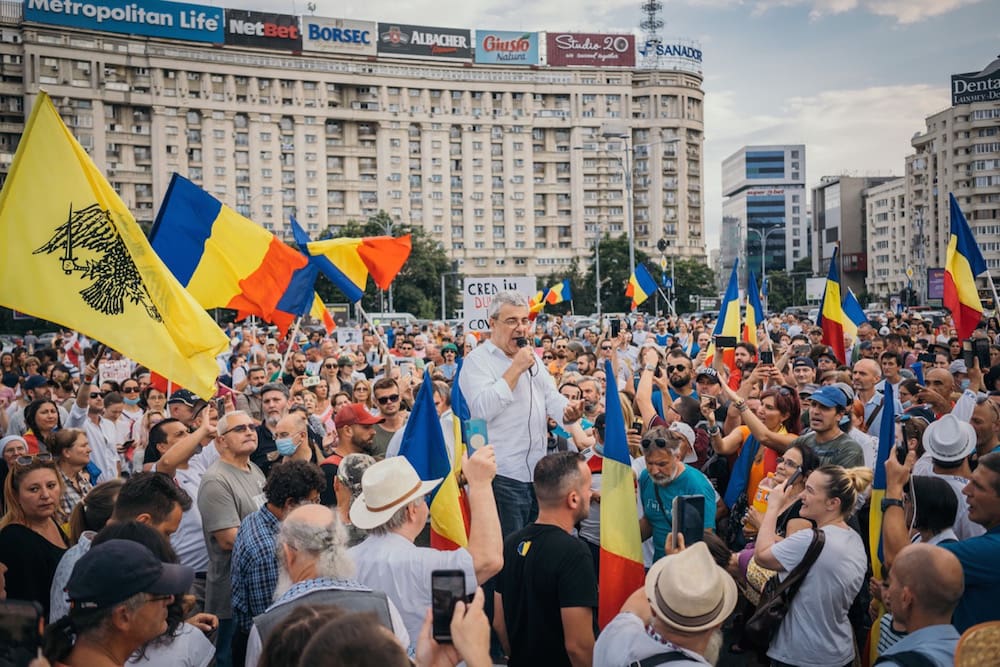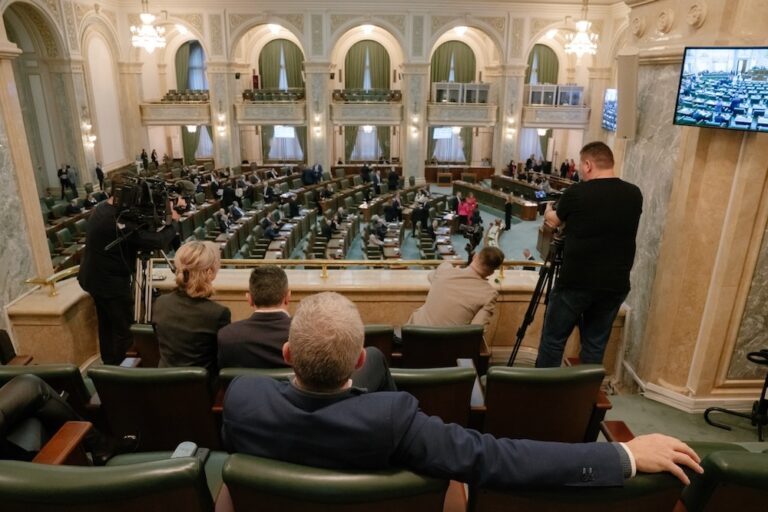The regulations and practices adopted by the Romanian authorities in response to the COVID-19 pandemic have created dangerous antecedents in crisis management that could affect democracy.
This statement was originally published on cij.ro on 1 September 2020.
The Covid-19 health crisis placed freedom of the press between brackets. A number of measures taken by state institutions have affected fundamental rights such as freedom of expression and information and have called into question the observance of journalistic principles.
The report “Fundamental rights under siege. Exceptional circumstances create dangerous antecedents for the Romanian press” published by the Center for Independent Journalism, with the support of IFEX, analyzes these measures and their effects. For the first time, the report presents the findings of the monitoring of procurement of media and advertising services between March and July 2020 and presents how the authorities used public funds to promote their image.
Decisions of the authorities during the state of emergency and alert with direct effect on freedom of expression include the non-transparent suspension of some sites and of the right to information, by strictly controlling the flow of information, but also by restricting the right to assembly.
Furthermore, the financial interventions of the state through public procurement of media services and through an advertising fund presented as a form of support for the vulnerable press during the state of alert questioned the media’s neutrality.
The lack of transparency of the authorities and the precarious state of the press even before the outbreak of the pandemic added to these circumstances.
The regulations and practices adopted by the Romanian authorities during the state of emergency and alert have created dangerous antecedents in crisis management that could affect democracy.
The report will show:
- The legislative and historical context of the regulations regarding the state of emergency and alert but also the non-transparent way in which the crisis management authorities worked.
- How wording in a paragraph of the presidential decree on the state of emergency allowed the possibility of blocking the content of online publications. During the state of emergency, 15 websites were suspended and two others were forced to take down articles published on their platforms. The measures seem to point towards a reflex that makes censorship the first choice in crisis communication.
- How freedom of information was affected by the presidential decree by doubling the response time of public institutions to requests for public information. Documented examples of the refusal of local and central authorities to respond to requests for information are provided.
- The importance to formulate integrity warnings to disclose irregularities in the health crisis management process, as a de facto limited right in a state of emergency. Examples from the study show how whistleblowers are still stigmatized and discouraged from disclosing known irregularities.
- Examples showing that, during the analyzed period, attacks on the right to free speech also came from the Police. There have been cases of people being fined for criticizing the way the authorities handled the health crisis.
- How the right to strike and the right to freedom of assembly were affected. Unclear regulations, messages from the authorities and the fear of fines have made these fundamental rights impossible to practice. Under these conditions, social networks became one of the few spaces where protests could be voiced, but this space was also monitored and restricted by the authorities.
- Why the written press was most affected by the health crisis and the measures taken by the authorities and what were the losses recorded by the media. However, not all the money disappeared from the market – public money advertising continued to be allocated, putting the media business in a position to be dependent on this source of income.
- How, through advertising contracts or newspaper subscriptions purchased by the authorities, not only advertising or newspaper copies are bought, but access to editorial content as well. Other identified practices include: offering contracts to all local media institutions, in each county, without audience criteria and advertising purchases during the pandemic for the promotion of events or actions whose development is uncertain.
- Findings two months after the controversial state advertising campaign as a means of supporting the press, a measure challenged by CJI Romania: the allocation of public advertising in a discretionary manner, without impact criteria imposed on the campaign contradicts public procurement legislation; the main beneficiaries of the ordinance are large televisions and radios, with a measured audience, while the local press, which has been most affected by the financial effects of the medical crisis, received the least support. Also, the mechanisms through which the amounts are allocated reward clickbaiting practices, the pursuit of traffic and audiences, to the detriment of quality journalism.
Conclusions:
Part of the limitations imposed during the health crisis proved to be excessive, some insufficiently thought-out, others poorly applied. Given the announced risk of the COVID-19 crisis expanding into the autumn of 2020 and beyond, it is imperative that the Romanian authorities, together with civil society partners, analyze the effect of these restrictions and take the necessary measures to maintain a fair balance between the need for security – sanitary or otherwise – of society and real respect for human rights in times of crisis.
At the end of the study, a series of recommendations for legislative and administrative changes are made, as well as for active civic involvement.
- The report “Fundamental rights under siege. Exceptional circumstances create dangerous antecedents for the Romanian press” can be accessed here.
The present report, “Fundamental Rights under Siege, 2020”, was coordinated by the Center for Independent Journalism Romania. The report was published with the financial support of IFEX.
IFEX is not responsible for the content of the report. The opinions expressed in this publication are exclusively those of the authors. They do not necessarily reflect those of IFEX. This publication cannot be reproduced, stored, or transmitted in any way or form without the express consent of the editor.



